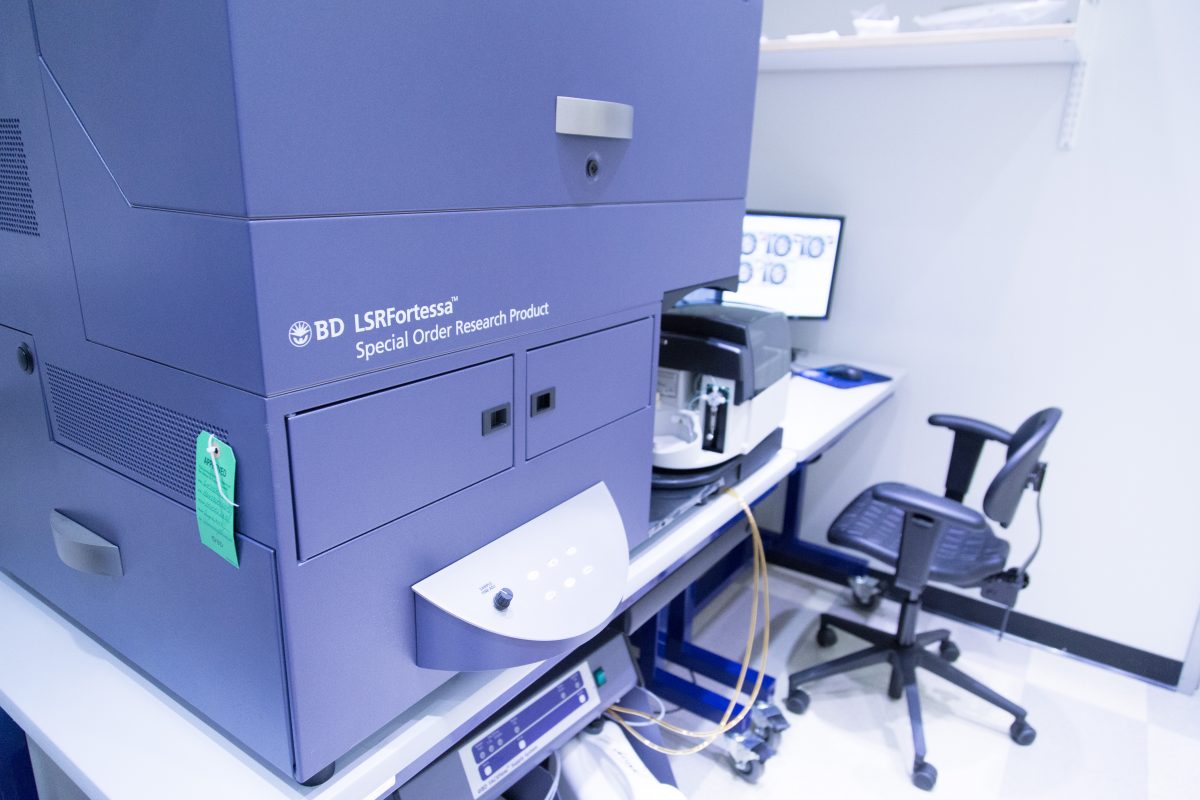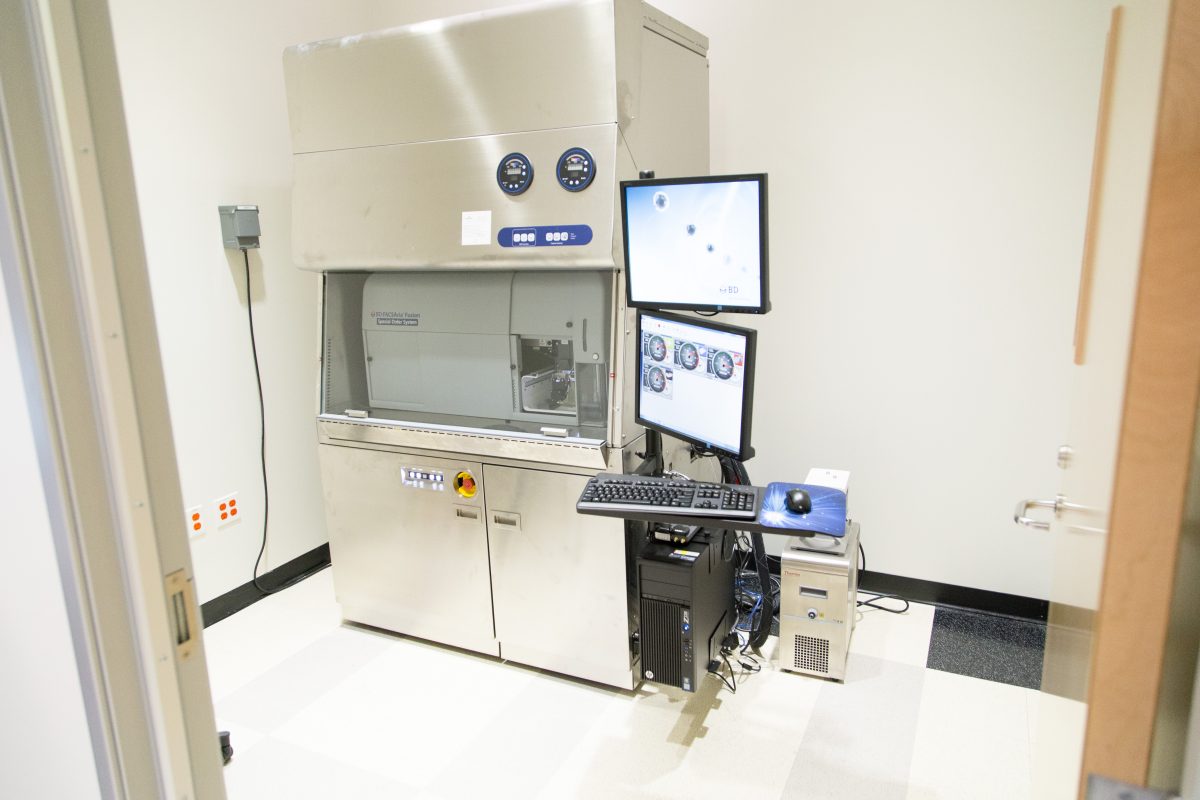The UTD Flow Cytometry or Cell Characterization core offers expertise in flow cytometry to support research. This service is operated and maintained by the Office of Research and Innovation and is located in the NSERL building. Currently, there is a BDAria Fusion for sorting and BDFortessa for analysis. Additional services include assistance in panel design, experimental design, and troubleshooting.
Instruments
Flow cytometry analyzer: BD Fortessa

Features:
- 5 lasers (UV, Violet, Blue, Green, and Red) for multi-color panel design
- Plate reader for high-throughput screens
- Independent or operator-assisted services
Flow cytometry sorter: BD Fusion

Features:
- 5 lasers (UV, Violet, Blue, Green, and Red) for multi-color panel design
- Biosafety cabinet for BSL-2 sorts
- Up to 4-way sort
Metabolic Analysis: Seahorse XFe96 Analyzer

Features:
- High-throughput 96 well plates
- Support for temperatures from 16⁰C to 42⁰C
- 4 injection ports for customizable assays
Service and Rates
- All fees in $/hr unless otherwise noted.
- User Fee – User fee for using the instrument with some assistance from staff.
- Service Fee – Staff runs the sample on the analyzer and the sorter.
- Training Fee – $50/hr per trainee for the Analyzer.
| Instrument | Internal User Fee | Internal Service Fee |
|---|---|---|
| Analyer | $25 | $55 |
| Sorter | N/A | $70 |
| Seahorse XFe96 | $70/Use | N/A |
Instrument Reservation
To reserve an instrument, please visit the Lab Resources Scheduler. Name of the Faculty Supervisor/Sponsor and a valid Cost Center number is required to complete the reservation.
- All users must complete Fortessa training course before they can use the analyzer independently.
- Schedule instrument use as far in advance as possible.
- Reservations must be cancelled at least 24 hours before the starting time of the reservation. Otherwise, the users will be charged for the reserved time slot.
- Schedule extra time before and after for any necessary controls (single colors, FMO, etc) and instrument cleaning (usually about 10-15 minutes).
- Standard sorting procedures assumes BSL-1 mammalian cells with no more than a 2-way sort and an 85µm nozzle. Alert the core in advance for any deviations from this (BSL-2, different nozzle size, 4-way sort, etc) so the instrument can have the settings changed before you arrive.
Guidelines, Tips, and Tricks
- Run samples for the Aria through a cell strainer immediately before bringing them to the core to prevent clogs.
- Bring samples and collection tubes in containers with closeable lids on ice (Coleman camp coolers work great). Bring extra sample buffer in case samples need to be diluted.
- Collection tubes for the sorter should have high serum concentration (~30%) in cell media (such as RPMI) to compensate for dilution by sheath fluid.
- Single-color controls should be performed regularly, especially for sensitive assays. For difficult-to-find populations, FMO (fluorescence minus one) controls can make it easier to remove background noise.
- Viability markers will increase the fidelity of cultured populations by excluding dead or dying cells.
- When sorting, periodically spin down collection tubes to pellet cells, reducing viability losses. For very long sorts, also refresh ice buckets.
- Spectra analyzers can help with panel design to reduce compensation problems. The core will be happy to advise, as well.
Contact
Please contact Jake Henderson at FACS@utdallas.edu located in RL B.713 for more information.

You must be logged in to post a comment.